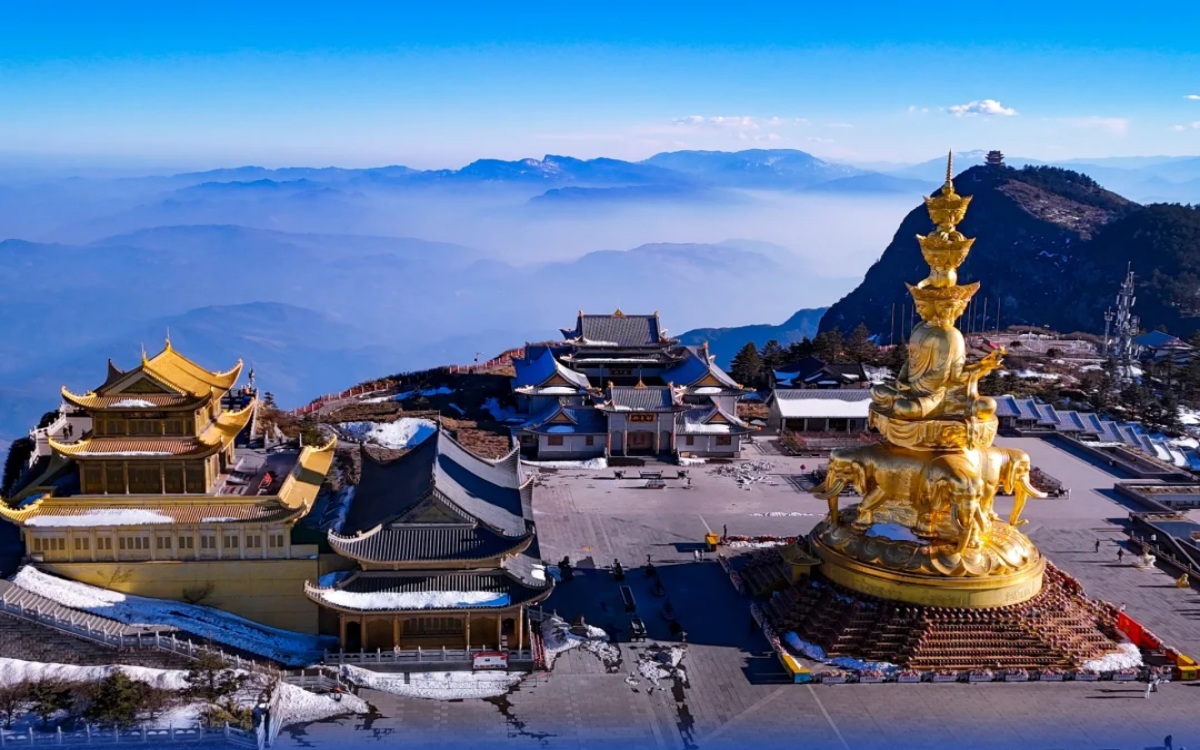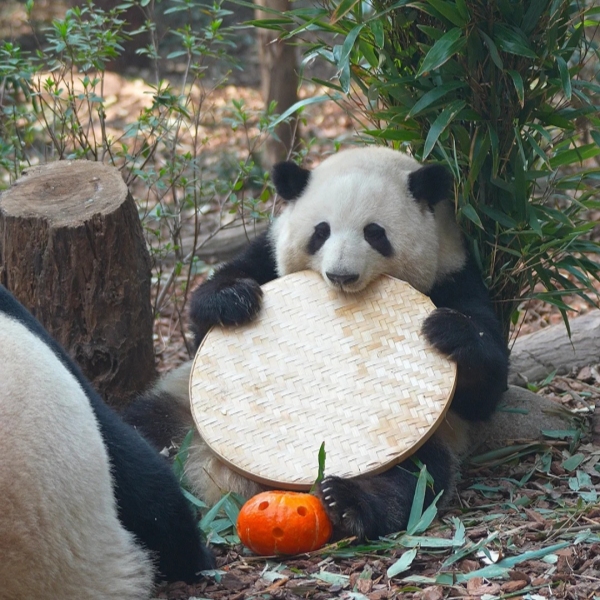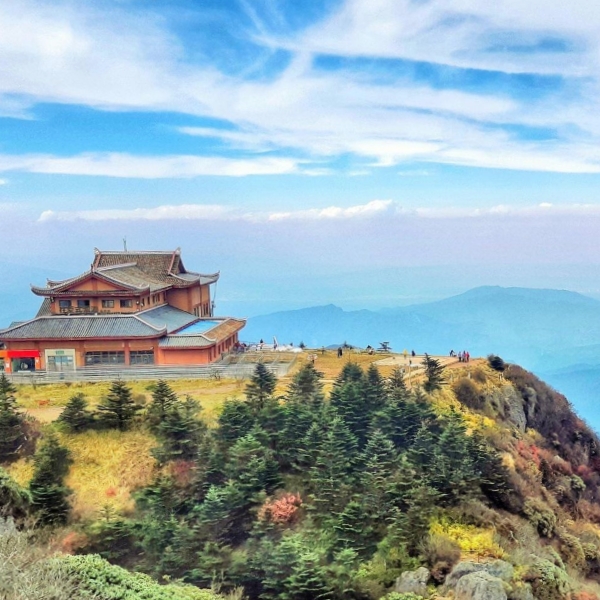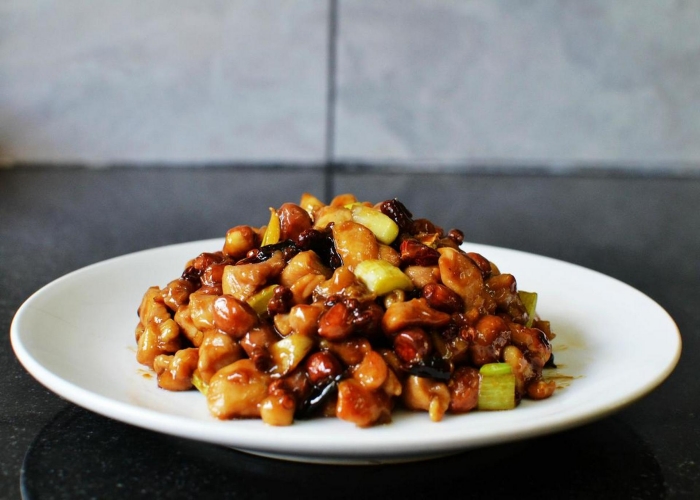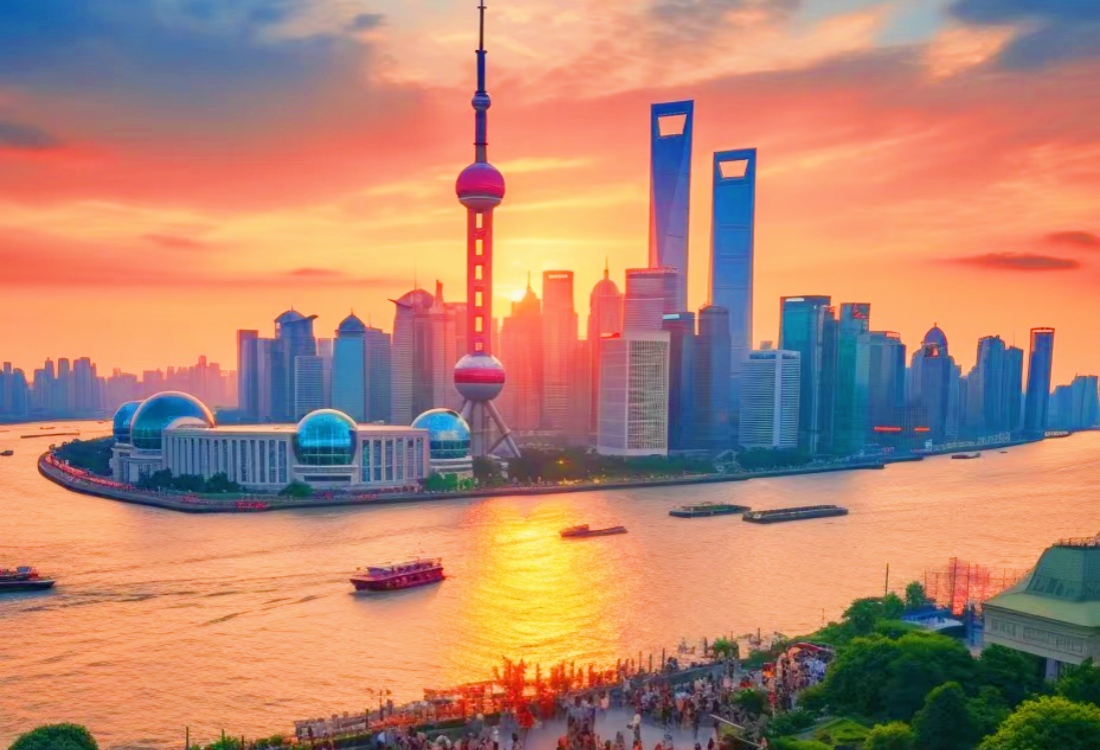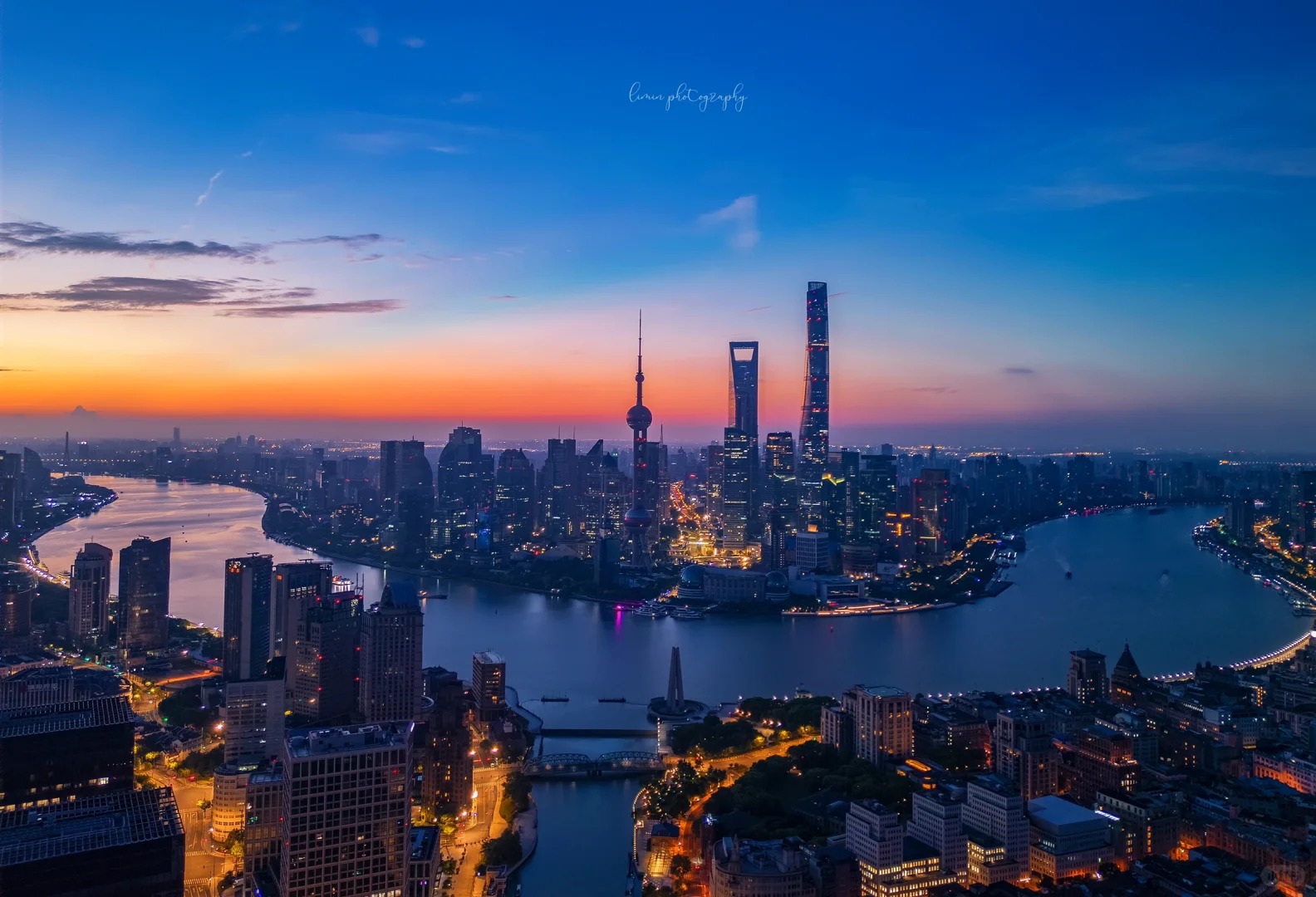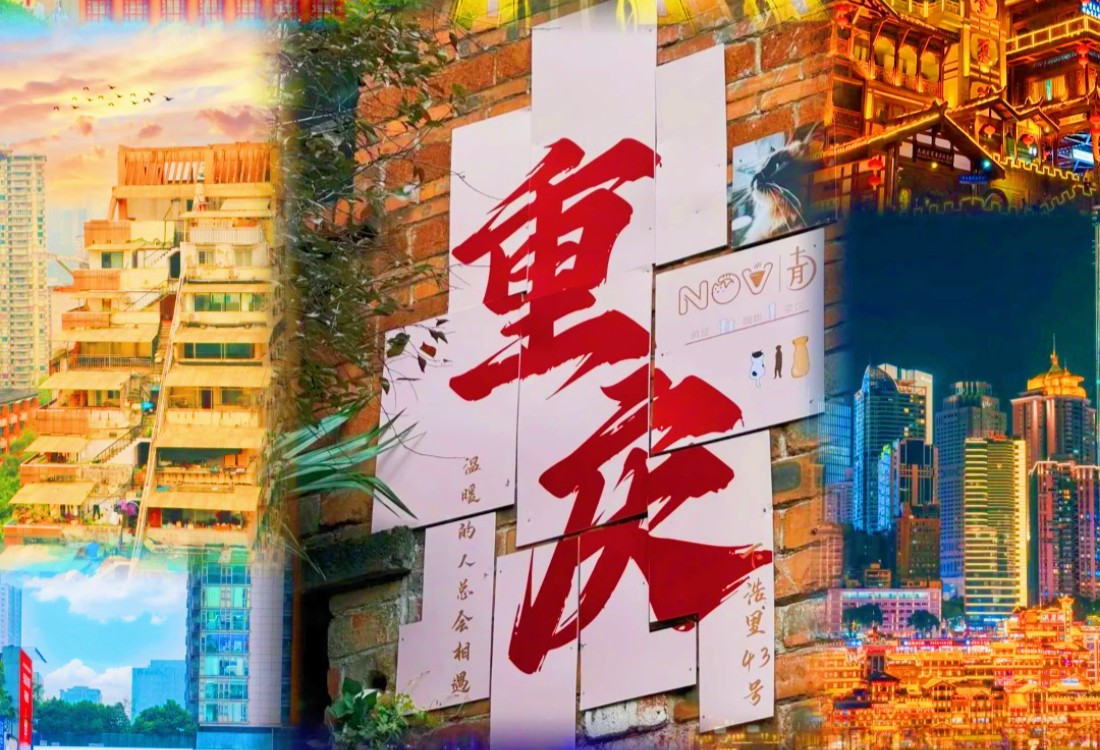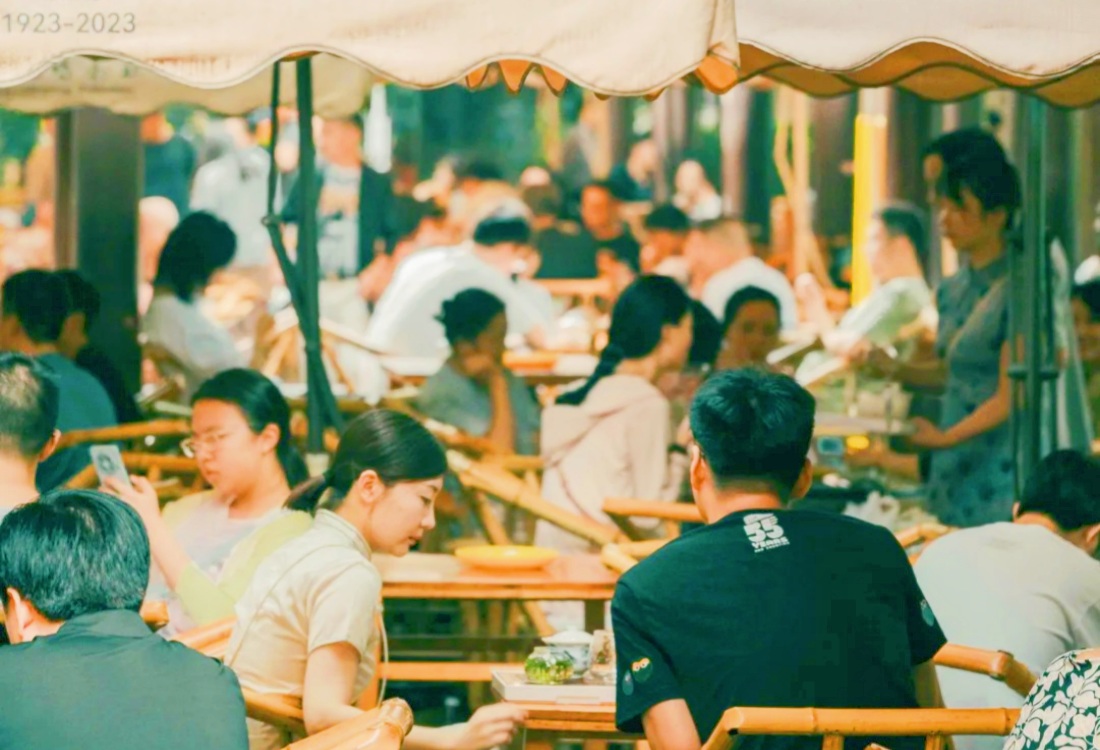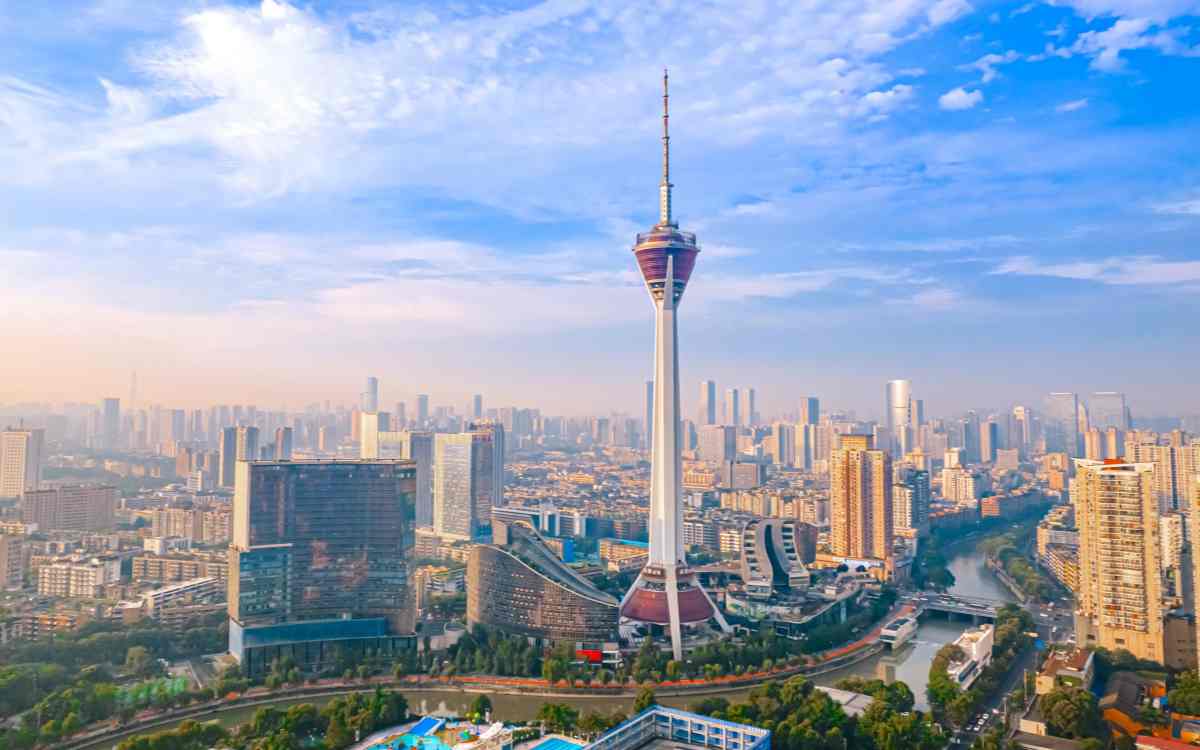Table of Contents
ToggleMount E’mei, stands as a majestic peak in China’s Sichuan Province, renowned not only for its stunning natural beauty but also as one of the Four Sacred Buddhist Mountains of China. A UNESCO World Heritage site since 1996, this mountain has been a significant spiritual destination for over two millennia, drawing pilgrims and travelers alike.This guide will help you navigate its wonders, from ancient monasteries to breathtaking vistas, ensuring your trip is both memorable and enriching.
What are the Must-see Attractions on Mount E’mei?
The Golden Summit (Jinding)
The pinnacle of any visit to Mount Emei, the Golden Summit stands at 3,077 meters. It’s home to the Huazang Temple and the towering 48-meter-tall, ten-faced golden statue of Samantabhadra. The 360-degree views from here are spectacular, offering sights of the “sea of clouds,” sunrise, and sometimes even the “Buddha’s Halo” (a rare optical phenomenon). Reaching the summit is an achievement, whether by hiking or taking the cable car.
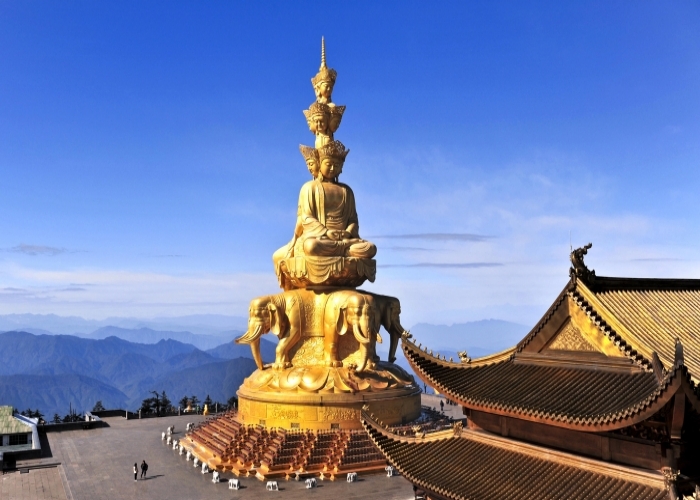
Wannian Temple (Temple of Ten Thousand Years)
One of the oldest and most important monasteries on Mount Emei, Wannian Temple is renowned for its statue of Puxian Bodhisattva riding a white elephant, cast in bronze and weighing over 62 tons. The temple complex itself is an architectural marvel, with beautiful halls and serene courtyards. Be prepared for some steep stairs to reach it.
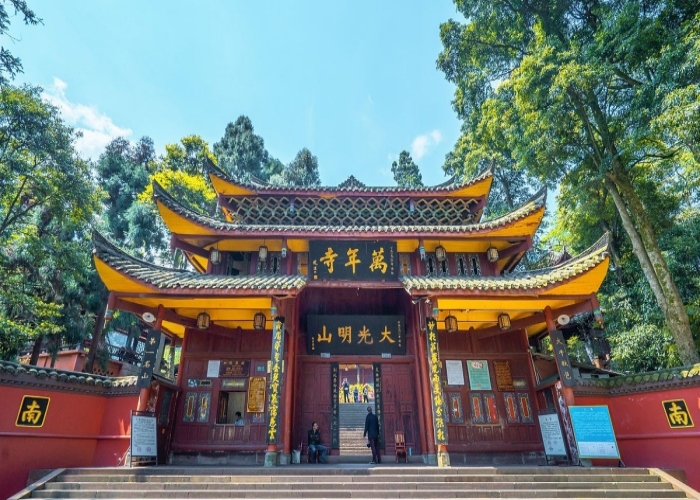
Qingyin Pavilion (Pure Sound Pavilion)
Nestled in a lush valley at an altitude of 710 meters, Qingyin Pavilion is a tranquil spot famed for its harmonious natural sounds – the rushing waters of two converging streams. Wooden bridges span the clear waters, creating a picturesque scene. It’s a perfect place for photography and quiet contemplation, often considered one of the most beautiful spots on the lower mountain.

Baoguo Temple
Located at the foot of the mountain, Baoguo Temple is often the starting point for a Mount E’mei pilgrimage. It’s one of the largest temples on the mountain and serves as the headquarters for the E’mei Buddhist Association. The temple complex includes impressive halls, gardens, and a collection of Buddhist artifacts.
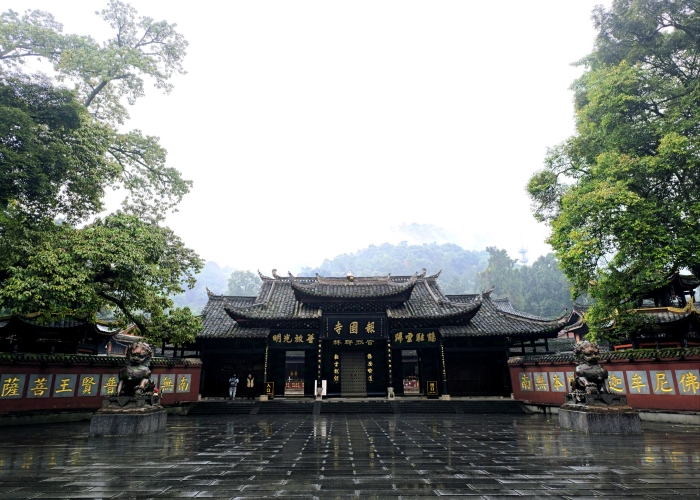
Fuhu Temple (Crouching Tiger Temple)
Situated near Baoguo Temple, Fuhu Temple is known for its tranquil atmosphere, hidden away in a dense forest. It’s a great place to escape the crowds and appreciate the serene side of Mount E’mei’s Buddhist heritage.

Ecological Monkey Zone
Mount E’mei is famous for its wild Tibetan macaques. The Ecological Monkey Zone, primarily between Qingyin Pavilion and Xianfeng Temple, offers chances to see these intelligent and sometimes mischievous creatures up close.

Hot Springs
After a long day of hiking, unwinding in one of Mount E’mei’s natural hot springs is a perfect way to relax. Areas like Hongzhushan and Lingxiu at the base of the mountain offer excellent hot spring resorts, often open late into the evening.
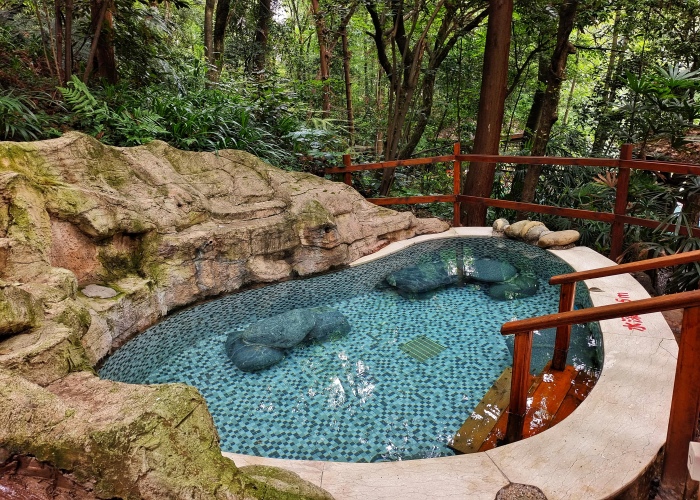
What is the Best Time to Visit Mount E’mei?
The ideal times to visit Mount E’mei are during spring (April to June) and autumn (September to November).
- Spring (April-June): Mild weather, blooming flowers, and lush greenery make for beautiful scenery.
- Autumn (September-November): Clear skies, comfortable temperatures, and stunning fall foliage. This period often offers the best visibility from the Golden Summit. November is particularly recommended for stable weather and fewer crowds.
- Summer (July-August): Warmer and wetter, with more tourists. Prepare for rain and higher humidity.
- Winter (December-February/March): The mountain transforms into a snowy wonderland, especially at higher altitudes. It’s great for those who enjoy winter landscapes and skiing at Leidongping Ski Resort. However, trails can be icy and challenging, so proper gear (anti-slip shoes, warm clothing) is essential.
It’s advisable to avoid Chinese public holidays like National Day Golden Week (early October) and Spring Festival (Chinese New Year, often in January or February), as the mountain can be extremely crowded.
What are the Hiking Ways of Mount E’mei?
Mount Emei offers a range of hiking experiences, from gentle strolls to challenging multi-day treks.
1.Classic Two-Day Hike: Baoguo Temple to Golden Summit
This is the most comprehensive hiking route, covering roughly 50 km.
- Day 1: Start from Baoguo Temple (550m), hike through Qingyin Pavilion (710m), the Monkey Zone, and aim to reach Xianfeng Temple (1750m) or further to Leidongping (2430m) for an overnight stay. This part is strenuous, involving many stairs.
- Day 2: From Leidongping, hike or take the cable car to the Golden Summit (3077m) for sunrise. Descend via cable car and sightseeing bus.
2.Shorter Hike: Wannian Temple Route
A popular option is to take a bus to Wannian Parking Lot, then the cable car up to Wannian Temple. From there, you can hike to Leidongping via Xixiangchi (Elephant Bathing Pool), which takes about 4-6 hours, then proceed to the Golden Summit. This route is shorter but still involves significant climbing.
3.Leisurely Walks
For those not keen on long hikes, explore the lower mountain areas around Baoguo Temple, Fuhu Temple, and Qingyin Pavilion. These areas offer beautiful scenery and cultural sites with less physical exertion.
How to Get from Chengdu to Mount E’mei?
Most visitors start their journey from Chengdu, the capital of Sichuan Province.
- By High-Speed Train: This is the most convenient option. Trains run frequently from Chengdu East Railway Station (成都东站) or Chengdu South Railway Station (成都南站) to Emeishan Railway Station (峨眉山站). The journey takes about 1 to 1.5 hours. The Mount Emei Scenic Area entrance is just a short taxi or bus ride (about 2 km) from Emeishan Station.
- By Bus: Long-distance buses depart from Chengdu’s Xinnanmen Bus Station (新南门车站) to Emeishan City. The trip takes around 2.5 to 3 hours.
- By Private Car/Taxi: Hiring a private car or taxi from Chengdu offers flexibility, especially for groups. The drive is approximately 150 km (93 miles) and takes about 2.5 hours.
What are the Essential Tips for Mount E’mei Journey?
To make the most of your visit to this sacred mountain, keep these practical tips in mind:
- Dress in Layers: Temperatures vary significantly from the base to the summit. Even in summer, the Golden Summit can be cold, so bring warm clothing, including a jacket, hat, and gloves, especially if staying overnight for sunrise.
- Wear Comfortable Hiking Shoes: Trails involve many stairs and can be uneven or slippery, particularly after rain or in winter. Sturdy, comfortable hiking boots or sneakers with good grip are essential.
- Be Prepared for Rain: Mount Emei is known for its misty and rainy weather. Pack a raincoat or umbrella.
- Monkey Etiquette: The Tibetan macaques are a highlight but can be aggressive.
- Do not feed the monkeys.
- Keep food and shiny objects out of sight and secured in your bag.
- Avoid direct eye contact or baring your teeth (which they might interpret as aggression).
- If monkeys approach, stay calm and walk away slowly. Staff are often present in high-monkey-traffic areas; you can purchase a bamboo stick for deterrence if needed.
- Stay Hydrated and Carry Snacks: Bring enough water and some high-energy snacks for your hikes. While there are vendors, options can be limited and pricier on the trails.
- Pace Yourself and Be Mindful of Altitude: The Golden Summit is over 3,000 meters. Ascend gradually if possible and be aware of symptoms of altitude sickness.
- Respect Local Culture: When visiting temples, dress modestly (cover shoulders and knees), speak softly, and follow any posted rules, such as removing shoes before entering certain halls. Do not take photos of Buddha statues where prohibited.
- Start Early: To make the most of your day and avoid crowds, start your hikes or take the first bus/cable car.
- Carry a Power Bank: Your phone battery might drain quickly due to cold temperatures (at higher altitudes) or frequent use for photos and navigation.
- Use Handrails: Many steps can be steep and slippery; use handrails where available.
Where to Stay at Mount E’mei?
Accommodation options are available both at the foot of the mountain in Emeishan City and at various points along the hiking trails, including monasteries.
- Emeishan City (Mountain Base): You’ll find a wide range of hotels, guesthouses, and hostels catering to different budgets. The Emei Grand Hotel is a popular upscale choice. Staying at the base provides easy access to transportation and amenities.
- On the Mountain: For a more immersive experience, consider staying in guesthouses or monasteries at locations like Leidongping, Xianfeng Temple, or Wannian Temple. Accommodation in monasteries is basic but offers a unique spiritual atmosphere. Booking in advance is highly recommended, especially during peak season.
What to Eat at Mount E’mei?
Sichuan Classics
Mapo Tofu – Spicy, numbing braised tofu with minced pork.
Kung Pao Chicken – Stir-fried chicken with peanuts and chili.
Buddhist Vegetarian Dishes
Temple-style zhacai (pickled mustard greens).
Mushroom-based “mock meat” dishes, like braised “vegetarian duck.”
Local Snacks
E’mei Tofu Pudding – Soft tofu topped with chili sauce.
Tea-Flavored Eggs – Hard-boiled eggs steeped in spiced tea.
Sweet Treats
Glutinous Rice Cakes – Chewy, slightly sweet steamed cakes.
Osmanthus Jelly – Fragrant, floral dessert.
Drinks
E’mei Green Tea – Fresh, locally grown tea to refresh after hiking.
Frequently Asked Questions (FAQs) of Mount E’mei
How many days are recommended for visiting Mount E'mei?
A typical visit to Mount Emei takes two to three days to explore the main attractions comfortably, especially if you plan to hike. A one-day trip is possible if you use cable cars extensively and focus only on the Golden Summit, but it will be rushed.
Is Mount E'mei suitable for families with children or elderly visitors?
Yes, Mount Emei can be enjoyed by families and elderly visitors. The use of sightseeing buses and cable cars makes key areas like Wannian Temple and the Golden Summit accessible without strenuous hiking. Opt for shorter, gentler trails in the lower mountain areas.
What should I do if I encounter aggressive monkeys?
Stay calm and avoid direct eye contact. Do not show food or try to run, as this might provoke them. Walk away slowly. If necessary, local vendors sell bamboo sticks which can act as a deterrent. Mountain staff are also usually nearby in popular monkey areas.

